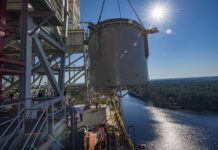Do you want to experience macOS Ventura on your Windows computer? Then the VMware virtual workstation is the perfect device for you. macOS Ventura has unique features that work to support you in your day-to-day work as well as improve productivity. Features like Spotlight quick actions, safety with Safari passkey, collaboration with messages, and shared library are the standouts. You can experience these by installing macOS using the virtual machine. So let’s get straight into it. Some steps have been referenced from Geekrar so you too can head over and take a look.
What do you need to run macOS Ventura VMware?
Minimum requirements to install macOS Ventura in VMware:
- RAM 8GB
- 80 GB free disk space
- CPU 4 cores
- macOS Ventura ISO (beta)
- VMware workstation Pro 16
Let’s begin the installation
When you try to install macOS on VMware workstation pro, you will notice that you don’t have it as a default option. For this to work successfully, you need to use the pillow projects unlocker version 3.0.4 and permit that to download by clicking on the download file. Then extract the folder and from inside you will be running two things. First, the installation command as well the win update tools.
Right-click on the first one, select Run as administrator and make sure you’re running it as an administrator only. A Windows dialog box will appear and you will see the option more info. Click on it and then tap on run anyway. After the running process is over, you are now going to update the tools by right-clicking on the win update tools and clicking on Run as administrator. Say yes to the prompt and it will start to update all the tools which will take about a few minutes.

Once it’s done, it disappears and closes out when it’s completely done. Now you can go ahead and open the Vmware, workstation pro and close the current window.
Onto the VMware workstation pro
- Launch the VMware workstation and click on Create a new virtual machine.
- Select typical and click on next. After that, select I will install the operating system later and click on Next.
- You will see that now you will get the option for macOS X which was not there before. It appears after running the unlocker tool.
- Now you are good to go as we are installing macOS 13 and click on Next.
The name of the virtual machine can be anything you want to keep. If you are running into space issues, you can click on Browse. It will help in selecting a different folder or different drive that you want to save it in. After that click on Next and then select a disk capacity. If it’s set to 80 then excellent, you can also keep it higher or lower depending on its requirement.
Install macOS Ventura 13 Beta
Furthermore, select the option to store the virtual disk as a single file and click on Next. The ready-to-create virtual machine window will open where you can see the default settings. Click on customize hardware and make changes such as moving memory from 4GB RAM to 8GB or more depending on your requirement. You can also change the processors from 4 to 8 and move on to the next one.
Further, click on New CD/DVD and enable the ISO image file and click on Browse. You need to keep an ISO image file download. The image file will look like macOS Ventura.iso. Go ahead and select that and click on Open. You have already modified the settings you need so go ahead and click on Close. Tap on the finish.
To edit the vmx file, right-click on the macOS 13 and click on the Open VM directory. Inside you will find all the files that are associated with your virtual machine. You will be editing only the vmx file so right-click on it and click on Open with Notepad. After that, the vmx file will open over there. Scroll down to the very bottom, create a new line by hitting enter, paste the line “smc.version =0”. Once you have it added there, another thing you want to do is search for a line.

Click on edit and then find the ethernet which will be ethernet0.virtualDev. Scroll down at the bottom and replace “e1000e” with “vmxnet3”. After the changes, save the file. Then click on file and tap on exit. Close the other dialog box too. Now you are ready to start the virtual machine. Select macOS from the left-hand side and click on power on this virtual machine and its going to boot up.
Configure the operating system for macOS Ventura
This process will take a few minutes, and in the meanwhile, you can go to the next step. Once you get the language option, select whichever you are comfortable with and click on the next arrow. In the next screen, you will be selecting the disk utility and then tap on continue. Furthermore, select VMware SATA Hard drive media which is the virtual drive you are using now, and click on erase. Give it a name and for the format tab, you can select the one you like preferably a macOS extended journal, and click on erase.
The process will take a few seconds to erase and then tap on done. Now you are ready to install the operating system so close the existing window. Select the install macOS 13 beta and click on Continue. Click on continue again. For the software license agreement, select Agree and then select the virtual drive. Tap on continue again and wait for some time for the process to finish.

Setting up macOS Ventura
Now that the operating system is installed, select your region, for example, the United States, and click on continue. Leave the default options as it is and click on continue. You don’t need to do anything for accessibility as well. Furthermore, select the local network, click on continue and leave all the internet connection options in the default setting. Again, click on continue, and tap on continue again for data and privacy.
In addition, you don’t need to do anything for migration assistance as well so select Not Now, for terms and conditions, you can just select agree and click on agree again to confirm. For name, you can just type in any name and password. Click on continue. You don’t need to enable any location services to select the time zone you’re in and tap on continue. Furthermore, you can leave the analytics part, you can skip this and click on set up later for screen time.
Conclusion
For the look of your operating system, you can select whatever you like or leave it at default settings. A feedback assistant will appear so you can click on continue or close it. And that’s how you can install macOS Ventura on your window computer using a virtual machine.



































